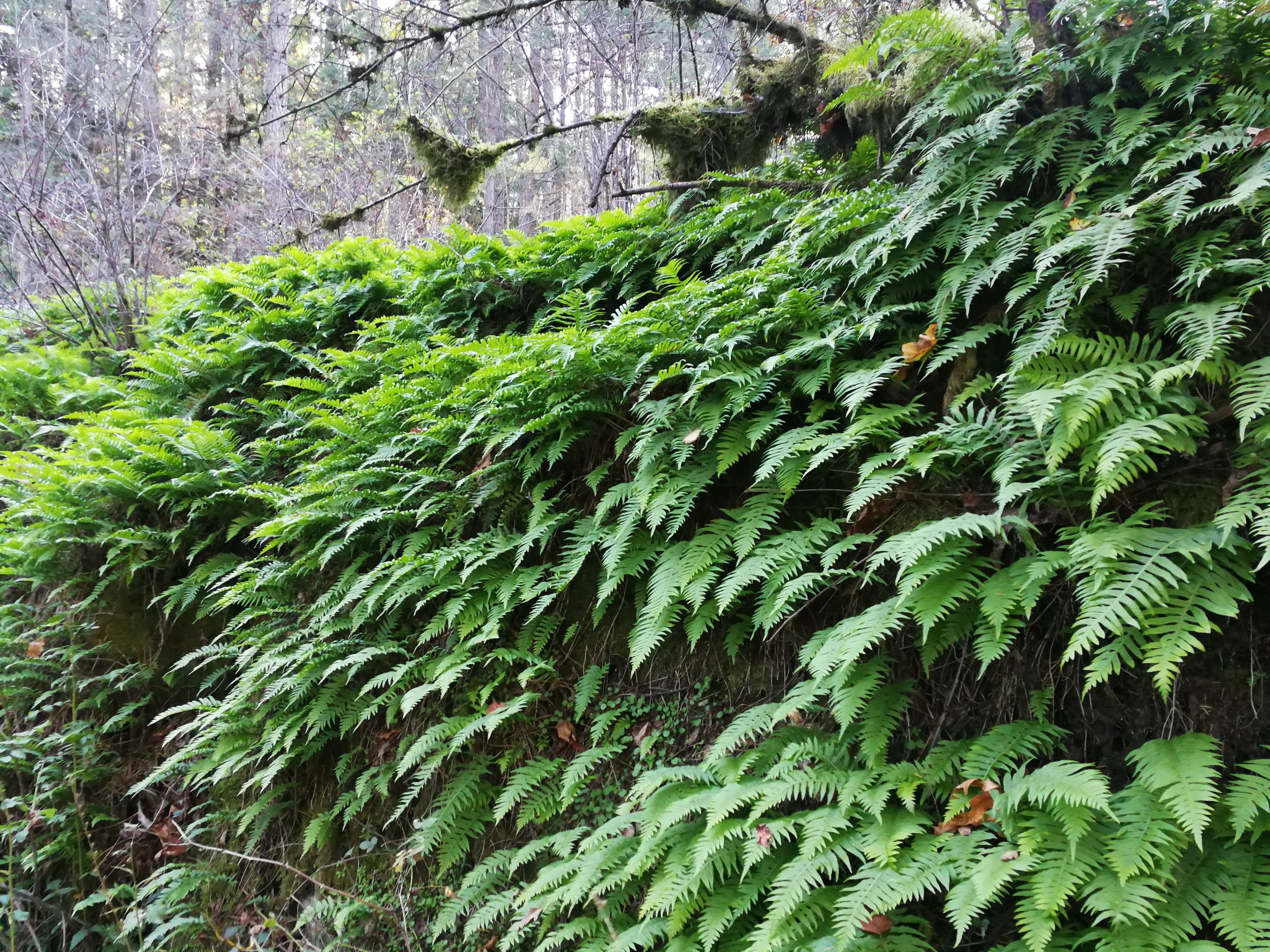Gardening with West Coast native ferns.
Although I’m not entirely sure why: there seems to be a general aversion to planting ferns in the garden. Perhaps they are viewed as tender (they’re not), finicky (no). or boring (eye-twitch) when they are one of the most reliable groups of plants we have in our gardening arsenal. If you have a bit of shade and decent soil you can grow most ferns. Thankfully, some of the best garden ferns are also natives in our area. Here are some of the best:
Western Sword Fern (Polystichum munitum)
Not only is it the most commonly planted fern in our area, it’s also one of the most versatile landscaping plants we have at our disposal. These large (3’x3’) evergreen ferns can cover a lot of space in a shady bed and are inedible to deer and most pests as well as being almost completely disease free. In addition, they require only yearly maintenance of trimming off old fronds (though I find a biannual ‘chop down to the crown’ in late winter yields a fantastic flush of new growth in the next months).
Deer Fern (Blechnum spicant)
Although these ferns are more common up-island than in the CRD, they will flourish in the right spot. Although similar to sword ferns, these ferns are quite a bit smaller and lower growing (usually under 1.5’ though their fertile fronds can reach up to 3’). They will take more shade than most other ferns but will suffer in the sun. Like ‘Swords’ they are also evergreen and are deer resistant (despite the name).
Maidenhair Fern (Adiatum aleuticum, A. pedatum)
These ferns can provide a very striking look especially when paired with broad leaved plants like hosta. Unlike the previous ferns, these ferns spread via rhizomes so will form an attractice clump over time. One of my favourite affects I’ve witnessed utilized them at the top of some stone garden stairs which gave the impression of decending under water as you walked from above to below the maidenhairs. Unfortunately, they are completely perennial so will disappear until spring.
Lady Fern (Athyrium felix-femina)
Just like it’s name sake, these ferns’ delicate beauty combine with toughness to provide another fantastic garden plant. They can take a bit more sun that most ferns but will begin to look a bit ‘crispy’ if allowed to dry out. They spread well and can start to cover a bit of ground after a few seasons. Keep protected from traffic though as the fronds are prone to snapping off. Like the Maidenhair, Lady Ferns are deciduous but the new croziers in spring can be harvested and eaten as fiddlehead greens.
Honorable Mention
Licorice Fern (Polypodium glycyrrhiza)
Although it’s one of my favourite native plants from our area, they are epiphytes, so they grow only on vertical services (rocks, tree trunks, and stumps) and can be hard to garden with. Their joy is in that they are winter-green (reverse perennial) and can be found cohabiting with colonies of native mosses. As per their name. the stems and roots do taste like licorice-root and have quite a bit of stored sugar. Such a great plant!
Hall of Shame…
Bracken Fern (Pteridium aquilinium) a large, spreading fern that excels in sunnier and dryer spots. It’s success and size make it invasive in a garden and I treat it as such. Pull!






